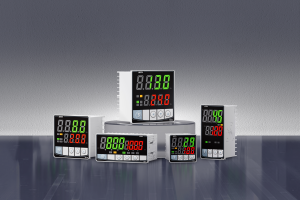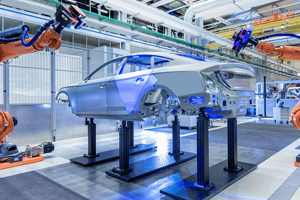Understanding the Derivative Term in PID Controllers: Evaluation and Applications
Discover how the derivative term in PID controllers evaluates the rate of change of error, its benefits, challenges, and practical applications in industrial control systems. Learn how it enhances stability and reduces overshoot.
1. Introduction to PID Controllers
PID Controllers,Proportional-Integral-Derivative controllers, also referred to as Proportional, Integral and Derivative, are essential elements in industrial control systems, used to achieve desired output by adjusting input controls. Each term in a PID controller--Proportional (P), Integral (I), and Derivative (D)--serves its own purpose of maintaining system stability and performance: Proportional addresses current errors while Integral looks backward while Derivative evaluates rate change errors while offering predictive actions that increase response speed of response in industrial systems.
2. Understanding the Derivative Term
A PID controller's derivative term serves to predict future errors based on their rate of change; mathematically this is expressed as the derivative of error with respect to time. It's crucial for systems where rapid fluctuations could potentially cause instability or overshoot; by taking into account how quickly errors change, this term acts like a damping agent that helps smoother out response while limiting excessive oscillations and oscillation.
3. Derivative Term in PID Control
The derivative term serves to assess the rate of change of error. This predictive ability allows controllers to anticipate future errors and adapt output accordingly; for instance if errors increase too rapidly then derivative term output increases accordingly to counteract this trend, potentially decreasing overshoot risks and improving system stability.
* Evaluating Error Trends: To evaluate error trends over time, derivative terms calculate slope. With this knowledge in hand, controllers are then able to make accurate forecasts about future behavior of error trends and take immediate corrective actions accordingly.
* Anticipatory Action to Counteract Future Errors: Anticipatory action can be useful when countering future errors; particularly useful in systems with high inertia where rapid change could potentially create instability. This predictive approach to mitigation has proven especially valuable when applied in systems where high inertia causes instability issues.
4. Benefits of Derivative Terms in PID Controllers
PID controllers that include derivative terms provide several advantages over nonderivative alternatives:
* Reducing Overshoot and Oscillations: The derivative term can help dampen system responses to reduce overshoot risk while simultaneously minimizing oscillations for more stable output control. This results in greater output stability.
* Enhancing System Stability: Through predictive action, derivative terms enhance system stability by smoothing out controller response times to changes in process variables and making controller response times more robust to fluctuations.
5. Challenges and Limits
Although derivative terms offer numerous advantages, they also present certain challenges and restrictions:
* Sensitivity to Noise: Since derivative terms evaluate rate-of-change of errors, any noise present can lead to significant fluctuations in derivative output and even cause instabilities in systems.
* Potential for Derivative Kick: Any sudden change to the setpoint can trigger derivative terms to produce an undesirable spike in output known as derivative kick, leading to undesirable behavior within a system if setpoint changes frequently.
6.Practical Applications
Derivative terms can be particularly effective in applications where rapid changes to process variables could potentially cause instability or require precise control, for example in scenarios like manufacturing plants with rapid change occurring quickly enough that precision control may become essential. Some examples include:
* Temperature Control: When maintaining stable temperatures is vitally important in systems like chemical reactors or furnaces, derivative terms offer invaluable assistance to avoid overshoot and achieve a balanced temperature profile.
* pH Control: When controlling pH levels is critical to success in processes, derivative terms can help mitigate rapid fluctuations by helping maintain stable output values over time.
6. Recommended Websites for Further Reading
1. WHEN SEEKING FURTHER READING (PROMOTED WEBSITES FOR FURTHER READING), here are two great resources: Control Engineering: Comprehensive explanation of PID control derivative term with practical examples;
2. Engineering Education (PE): Provides detailed explanation and applications of derivative terms used within PID Control systems
Control Station provides insight into how the derivative term impacts PID controller performance and challenges.
3. Control Guru offers comprehensive guides to PID control including how its derivative term fits in to this model of operation.
- What is a PID Controlled Espresso Machine? A Comprehensive Guide
- Understanding PID Controllers: Principles, Components, and Applications























